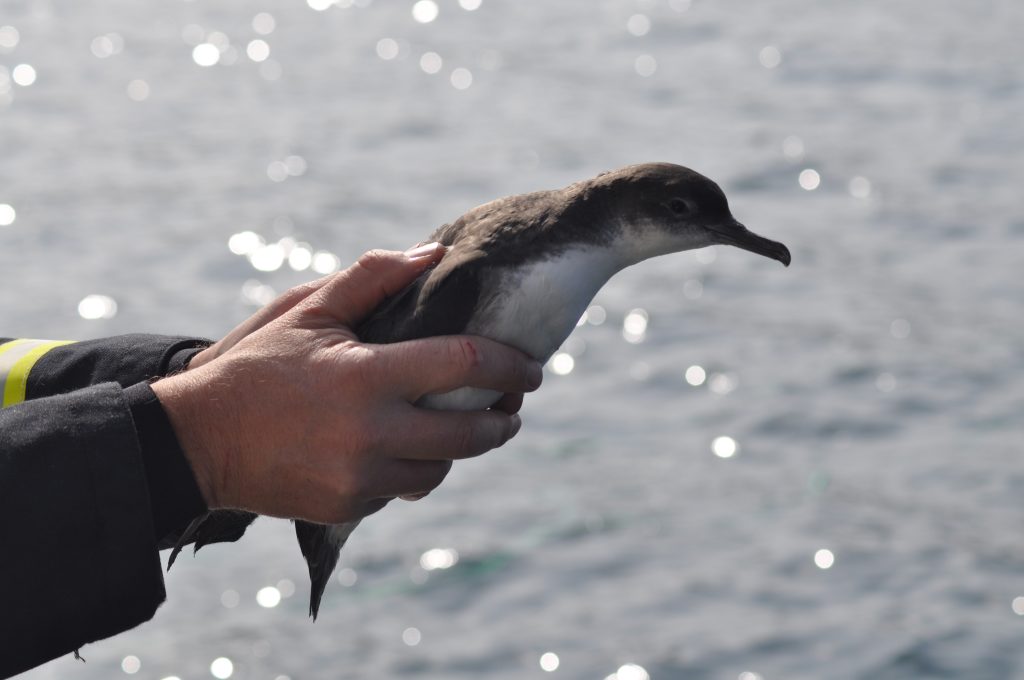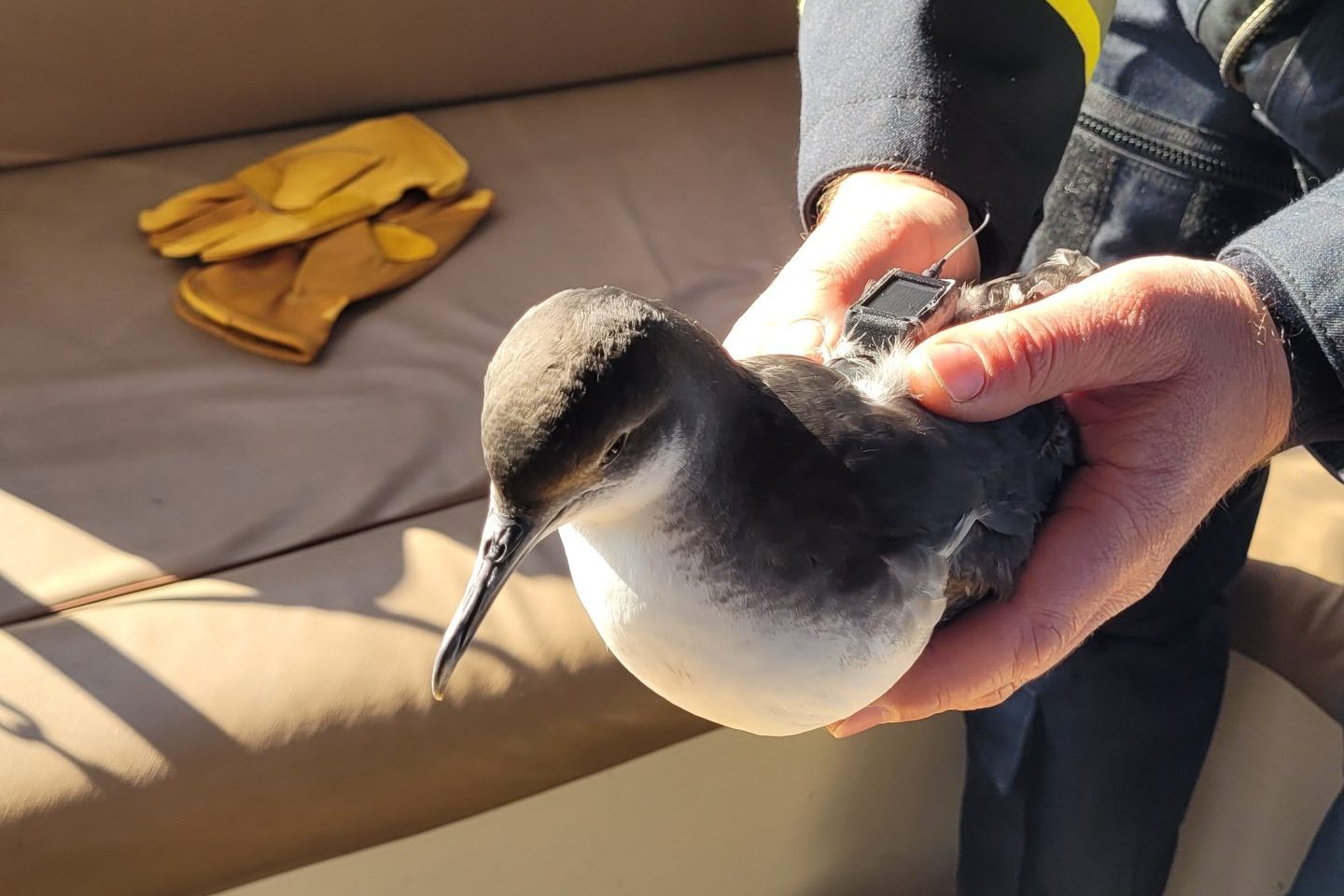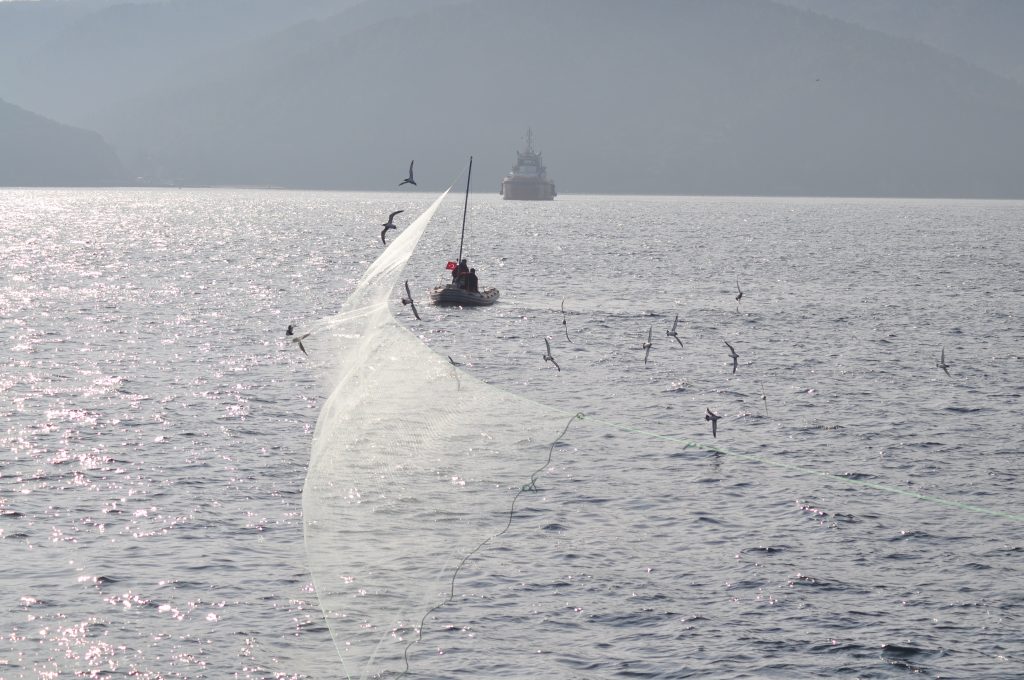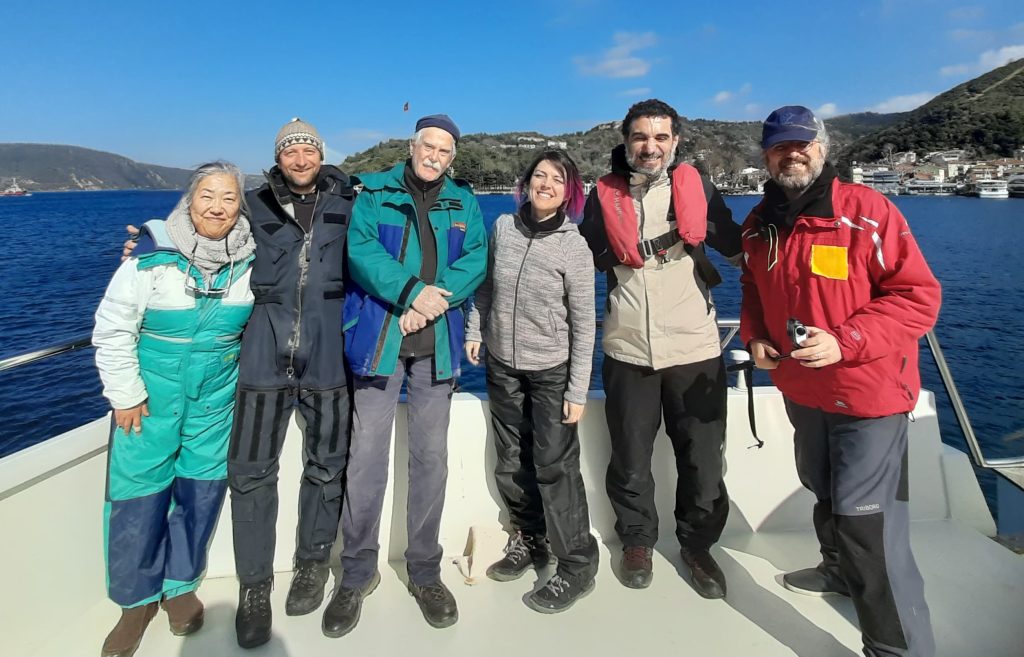In February 2024, GPS/GSM transmitters were deployed on Yelkouan Shearwaters in the Istanbul Strait as part of our project aiming to better understand their migration patterns. Follow their movements in real-time on this interactive map:
(tracked from the Istanbul Strait)
Viewing on a computer screen is recommended. From your phone, zoom out the web page for better browsing.
The resolution can be increased/descreased by modify the step value in the URL bar. By default, step=30 shows one out of every thirty data points for faster page loading.
From our previous tracking in 2021 and 2022 of adults and juveniles from nesting sites in Croatia, Malta and Tunisia with GPS/GSM transmitters, we discovered that some individuals traveled 2500 km to reach the Black Sea, with asynchronous but similar trajectories. After entering the Black Sea, we quickly lost track of them since their transmitter fall off naturally after a few weeks.
The Istanbul Strait is recognized as a transit zone for thousands of Yelkouan Shearwaters daily at certain times of the year. Like a bottleneck connecting Seas, it is the ideal location to equip them with GPS/GSM transmitters to track their ‘return’ routes towards their nesting sites.
By better understanding their journeys and tracing the origin of the birds visiting the Black Sea, this project has the potential to reveal previously unknown nesting sites in the Mediterranean and Black Seas.



Capturing birds at sea is rarely an easy task. Here, we employed a technique first utilized 28 years ago in the Istanbul Strait by the Turkish Marine Research Foundation (TUDAV), with the assistance of its original designer (Asaf Ertan), involving the deployment of a long net towed between two vessels.



This study has been conducted through a collaborative effort involving:
CIESM
Dr Loriane Mendez
TUDAV / Faculty of Aquatic Science, Istanbul University
Dr Ayaka Amaha Ozturk
Prof Bayram Ozturk
Assoc. Prof Arda M. Tonay
Inst. of Env. Sciences, Bogazici University
Dr Rasit Bilgin
Dr Dilek Sahin
Department of Biology, Ege University
Dr Ortaç Onmus
Independant researcher:
Dr Benjamin Metzger





Acknowledgements: Asaf Ertan for his implication to replicate his method to capture Yelkouan Shearwaters; Aylin Güler, Onur Akyüz, Selim Ramazanoğlu and Captain Can Hoşgör for their precious help on board.
Research authorizations and ethical approval for this study was obtained through an extension of the TÜBİTAK project 120Z950 and its work package no:5 (WP5) entitled “The Conservation of Yelkouan Shearwater in the Mediterranean and Black Sea Basins Using Next Generation Genomics, Acoustic and GPS-GSM Monitoring Methods”.

Blog
22.03.24 – Among the twenty-eight birds tracked at sea with GPS/GSM, nineteen showed intensive activity in the northern area of Sebastopol, highlighting a crucial foraging hotspot for the species. A dozen of them have explicitly initiated breeding behavior, starting to make round trips from nesting sites on multiple small Greek islands.
13.03.24 – In less than 10 days we receive the full trajectories of 10 more birds! They finally entered areas covered by the GSM network, most of them after spending time north of the Black Sea foraging intensively, then crossing the Istanbul Strait from north to south. Many birds have finally revealed their nesting sites on various small islands in Greece. This marks a significant achievement in terms of our objective, which was primarily to understand where the birds observed in large numbers in the strait are coming from and to discover new colonies! However, other individuals have still not returned to land and continue to roam the Black Sea (either on the Turkish side or the Bulgarian/Romanian side). These individuals are likely juveniles, immature, or sexually mature adults who have « skipped » a breeding year (a phenomenon described in shearwaters).
04.03.24 – We received the full trajectories of 4 individuals (F1, G4, G7, J1) that were intensively foraging near Sevastopol – far from GSM coverage and thus not sending their locations until now! They crossed again the Istanbul Strait, and are now in direction of the Aegean Sea. If they are active breeding birds, we may soon discover their nesting sites…
29.02.24 – Why only nine tracks are displayed on the map? In fact, when a bird is not under GSM coverage, the transmitter cannot send all the locations stored since the last communication. This means that only nine birds are currently close to the coasts while the others remain distant from any GSM coverage each time the GPS attempts to communicate, such as in the middle of the Black Sea. We hope to soon receive signals from these other birds. The good news is that once they will be in an area under GSM network, we will be able to recover their entire trajectory without any missing data.
27.02.24 – It has only been a week since the tracking began, and the routes are already fascinating. The eastern part of the Sea of Marmara and the Turkish coast of the Black Sea (east of the Istanbul Strait) are two highly visited areas. Located at the ends of the strait, they must be rich in small fish – probably anchovies – which the Yelkouan Shearwaters feed on. Others are more adventurous, like A1 and H2, who have already reached Bulgaria, or A2 and F2, who are traveling along the Turkish coast towards the eastern part of the Black Sea. We can see also that individuals transit through the Strait very quickly, probably frightened by the maritime traffic.
23.02.24 – Nine more birds were caught on this day, leading to a total of 30 individuals fitted with a GPS-GSM. Mission accomplished!
21.02.24 – Twenty birds tagged in one day, what a record! Among them were seven individuals from a large flock, displaying a strong motivation to cross the Istanbul Strait, noticing our net too late. The birds were measured, weighed, blood sampled for genetic analysis, equipped with GPS devices and released in good health. All of this will provide us precious data to better understand their behaviour and habitat, thus enabling us to better protect the species.
20.02.24 – The first four individuals were caught! Three from the same flock, and one from a following flock. All were heading north – but let’s see what will be their destination in the coming days.
18.02.24 – First day at sea! We conducted several tests of the method for catching birds with the net, hoping that it may work as it did 28 years ago!
